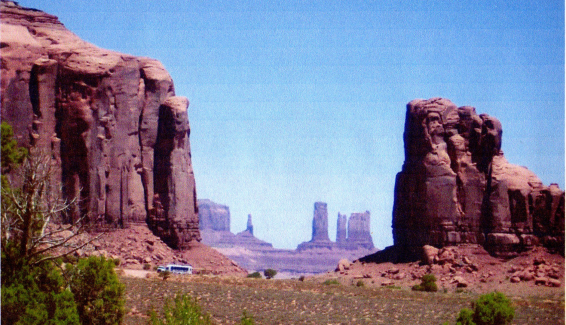NEW CITIES
CATEGORY: MORE PORT TOWNSEND
Back in the 70’s and 80’s, there was a lot of talk about planned new cities. It seemed that everyone was doing it. So was I.
I favored using high rises to keep the population from spreading all over the countryside, but not the Skidmore, Owings and Merrill, square box kind of high rises. My inspiration was unique: rock formations such as Spider Rock in Canyon de Chelly in Arizona, Monument Valley in Utah, and a place called Zanhgjiajie in China. The high rises in my cities would not be exact duplicates of these formations, but would be a modern impression of them.

The Monument Valley city would be located somewhere in the southwest so it would relate to the desert landscape. Each building would be a city in itself, or at least a town. A complex would start with one high rise in the center with more to be added later. Each high rise would have staggered roof heights like a desert rock pillar, and the bottom part of it would be a “scree slope” such as those at the base of the Monument Valley formations: a 45° cone shape from ground to tower, like a skirt. Taking advantage of the light, the surface layer of this part would contain living units with outside decks cut into it. There would be trees and plantings in the cut-outs giving each living unit their own garden. The inside of the cone would contain the mechanical equipment for the building, as well as shopping centers, recreation centers, meeting halls and other facilities that did not require natural light. The high rise part of the building would be offices. In true Corbusier fashion, there would be gardens on the roof tops.
These high rises would be clustered to make the city proper. The traffic between buildings would be underground through vacuum tubes. All ground surfaces would be parks with pools, lawns, playing fields and vegetable plots. Around the outside of the complex would be grain fields, vinyards, orchards, other produce and farm fields.

The Zarhgjiajie high rises would be for areas where there was more rain. They would be tall and narrow, again with varying roof heights. Their walls would be offset in various places and at various angles. They would have deep, cave-like vertical indentations and vertical “cracks” where all the glazing would be. The inside of the indentations would also contain balconies and terraces in random places to accommodate the residents outside living needs. All the flat surfaces including all the roof tops, would be planted, as well as the walls where there were no windows. The watering of these plants would be part of the cooling system for the building
